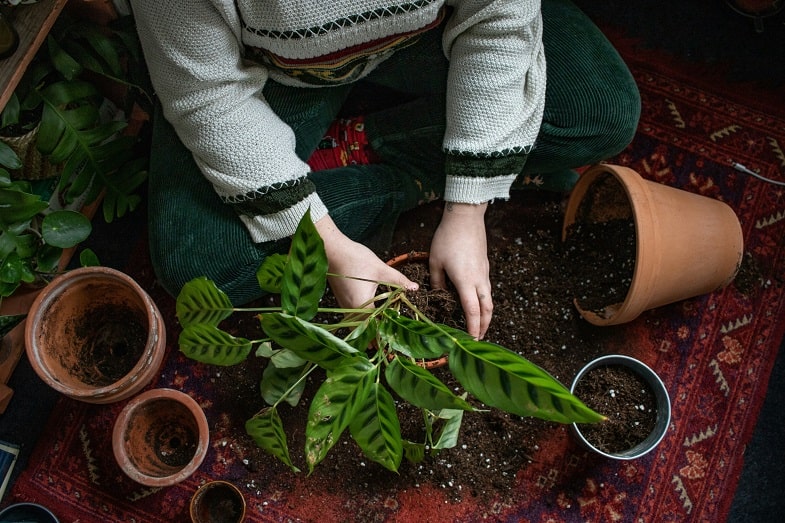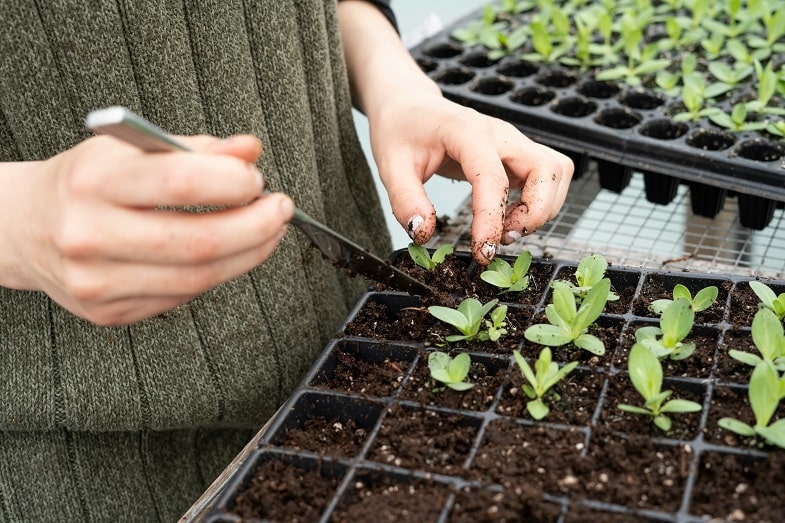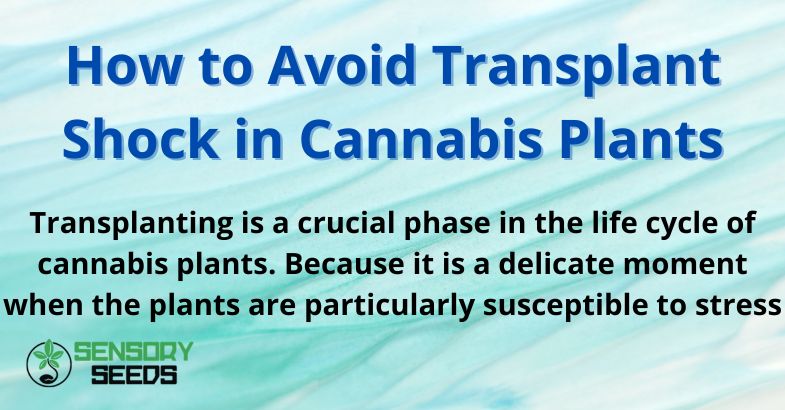Published on: 09/08/2024
Transplanting is a crucial phase in the life cycle of cannabis plants. Because it is a delicate moment when the plants are particularly susceptible to stress
Transplant shock can slow growth, reduce yield, and, in some cases, cause the plant to die. In this article, we will explore the most effective strategies to minimize transplant shock and ensure a healthy and smooth transition for your cannabis plants.
What is a Plant Transfer and Why Is It Stressful?
Before delving into specific strategies for transplanting plants, it is essential to understand what this process entails and why it can be stressful for plants, including cannabis seeds once germinated.
Transplanting involves moving plants from one container or soil to another. During this process, the roots, which constitute the plant’s vital system, can suffer damage. This can disrupt the absorption of water and nutrients, causing physiological stress to the plant.
Additionally, the change in environment, including the type of soil, lighting, and humidity, can add further stress. In the specific case of marijuana seeds, it is particularly important to ensure an optimal environment during transplanting to promote healthy and vigorous growth.
Read also: What are the best cannabis strains for outdoor cultivation? Here are three options
How Does It Manifest?
Transplant shock can manifest in various ways. Plants may show signs of wilting, yellowing leaves, stunted growth, or, in more severe cases, die. It is essential to recognize these signals and take preventive measures to avoid them. Understanding the factors that contribute to transplant shock is the first step in mitigating its effects.


When to Transplant Cannabis Plants
Careful planning is key to minimizing transplant shock. It is essential to choose the right time for transplanting. The ideal period is during the vegetative stage when the plants are in active growth and have more resources to recover from damage. Avoid transplanting during the flowering stage, as plants are more vulnerable and less likely to recover quickly.
How Can You Tell If Plants are Ready for Transplanting?
Cannabis plants provide clear signals when they are ready to be transplanted. Observe the root system; if the roots begin to circle the edge of the container or emerge from the drainage holes, it is time to transplant. Additionally, if the plant’s growth appears to be slowed despite adequate nutrition and watering, it may need more space for the roots.
Preparation of the New Environment
Choice of the New Environment and Transplanting
Before proceeding with the transplant, it is essential to carefully prepare the new environment. The new container or soil must be ready and have optimal conditions to support the plant’s growth.
Ensure that the new soil is well-drained and rich in essential nutrients. Adding mycorrhizae, a type of beneficial fungus, can help improve nutrient absorption and stabilize the roots.
How to Treat the Soil?
The soil in the new container should be lightly moistened before transplanting to avoid dehydration shock. You can further improve the soil quality by adding organic compost or vermicompost, which provide essential nutrients and enhance soil structure. Good soil aeration is crucial for promoting root development.
For those seeking faster growth for their marijuana plants, fast flowering cannabis varieties and fast seeds might be an ideal choice. Make sure to select high-quality cannabis seeds and use transplant techniques that support good root development.
Root Treatment
One of the most delicate steps during transplanting is managing the roots. The roots must be handled carefully to avoid damage.
Before transplanting, it is helpful to slightly moisten the soil in the original container to facilitate the removal of the plant. Avoid shaking too much soil off the roots, as this can cause trauma. Instead, handle the root ball gently to keep as much of the root system intact as possible.
Before placing the plant into the new container, you may consider using a rooting dip with growth-stimulating hormones. These products can help stimulate the growth of new roots and improve nutrient absorption. If the roots are particularly damaged or compacted, you can use a sterilized knife to gently cut the roots wrapped around the root ball, promoting the growth of new, healthy roots.
Transplanting Techniques
Transplanting Without Stress
There are several transplanting techniques that can help reduce stress. One effective method is “transplanting without stress,” which involves transferring the plant with its root ball intact. This method minimizes root damage and facilitates a smoother transition. Place the plant in the new container and gently fill the gaps with soil, avoiding excessive compaction.
Transplanting with Air Roots
Another method is “transplanting with air roots,” where the roots are slightly exposed to the air before being planted in the new container. This can stimulate the growth of new roots and improve nutrient absorption. This technique requires some experience to execute properly, but it can lead to significant results in terms of plant growth.


Post-Transplant Care
Irrigation and Nutrition
After transplanting, plants require special care to overcome stress and recover quickly. It is essential to keep the plants well-hydrated while avoiding waterlogging, which could lead to root rot. Adequate air humidity can help prevent leaf dehydration. Additionally, using a light, balanced fertilizer can provide the necessary nutrients to support the resumption of growth.
Monitoring Growth
Careful monitoring of the plants in the weeks following transplanting is crucial. Pay close attention to the leaves and roots to identify signs of stress, such as yellowing, wilting, or slowed growth. Address any issues promptly by providing necessary treatments to correct any nutritional deficiencies or water imbalances.
Temperature and Humidity Control
The environment in which plants are grown plays a crucial role in reducing transplant stress. Ensure that temperature, humidity, and light levels are optimal. Cannabis plants prefer moderate temperatures and a relative humidity between 40% and 60%. Lighting should be adequate but not excessive, to avoid putting additional stress on the plants.
Light Regulation
During the first few weeks after transplanting, it can be helpful to slightly reduce the light intensity to allow the plants to adapt to the new environment with less stress. Gradually increase the light intensity as the plants show signs of recovery.
Read also: Medical cannabis: a possible remedy for migraines?
Conclusion
Transplanting cannabis plants is a delicate yet essential operation to ensure healthy and vigorous growth. By following the strategies outlined in this article, you can minimize transplant stress and support the plants during this critical phase.
Accurate planning, proper preparation, and appropriate post-transplant care are the pillars of a successful transplant. With attention and dedication, your cannabis plants will thrive and produce abundant, high-quality yields.
Don’t have your seedlings yet? Buy quality cannabis seeds from SensorySeeds!









